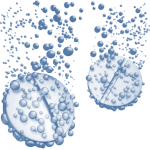Development and Optimization of Nanoparticulate Drug Delivery System of Telmisartan by DoE Approach
Nilam U Metkari, Sunita S Shinde, Supriya S Kore, Sipora S Gaikwad, Pallavi B Tanwade, Omkar B Tipugade
Abstract:
The present study was aimed to enhance the solubility and dissolution of BCS class II drug, Telmisartan (TEM), by nanoformulation approach. Several attempts were made to develop a nanosuspension by bottom-up and top-down techniques. Bottom-up techniques such as anti-solvent precipitation and emulsification solvent evaporation methods failed to reduce the size of the drug to nanoform by Poloxamer 108 and PVP K-30 at 1500–2000 rpm but resulted in micron-sized particles. However, the high pressure homogenization method has produced nanosuspension with a particle size of 112.6 nm and 0.119 PDI. Formulation and analytical development were carried out by statistical factorial design using the Design Expert software (version 11.0). The prepared nanosuspension was evaluated for particle size, entrapment efficiency, zeta potential and in-vitro dissolution. Zeta potential of optimized formulation was found to be −18.6 m V. Drug content and its release was estimated by the developed and validated in-vitro dissolution method. In vitro drug release studies on the optimized formulation have shown a drug release of 50.63% by the end of 6 h, whereas plain drug suspension has shown only 24.39% release, indicating a 2-fold increase of drug release with nanosuspension. It can be concluded that TEM, when formulated by high pressure homogenization technique as a nanosuspension, leads to enhanced solubility, dissolution, and stability. Thus, nanosuspension is promising approach to improve dissolution and bioavailability (BA) of Telmisartan
Keywords: Telmisartan, Pluronic, Nanosuspension, DoE, High Pressure Homogenization, Bottom-Up Anti-Solvent Precipitation Method.



